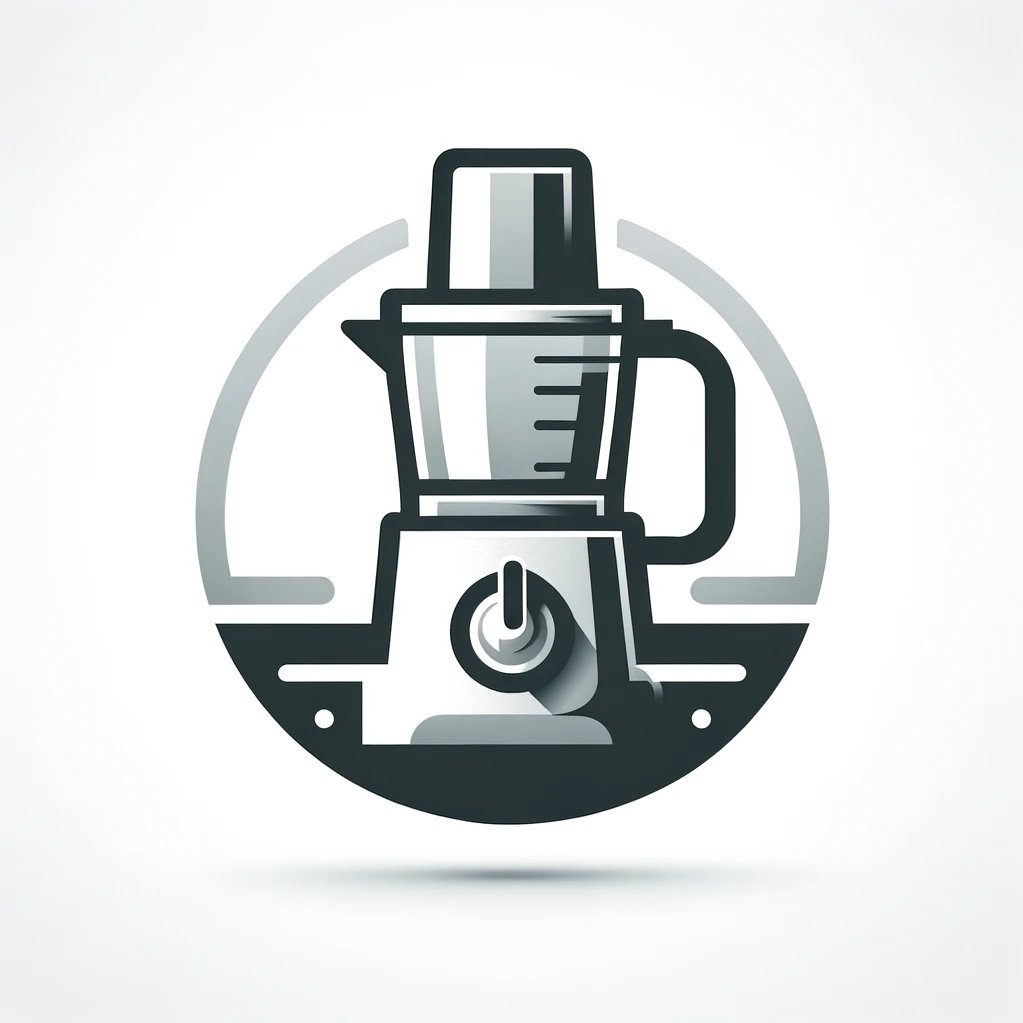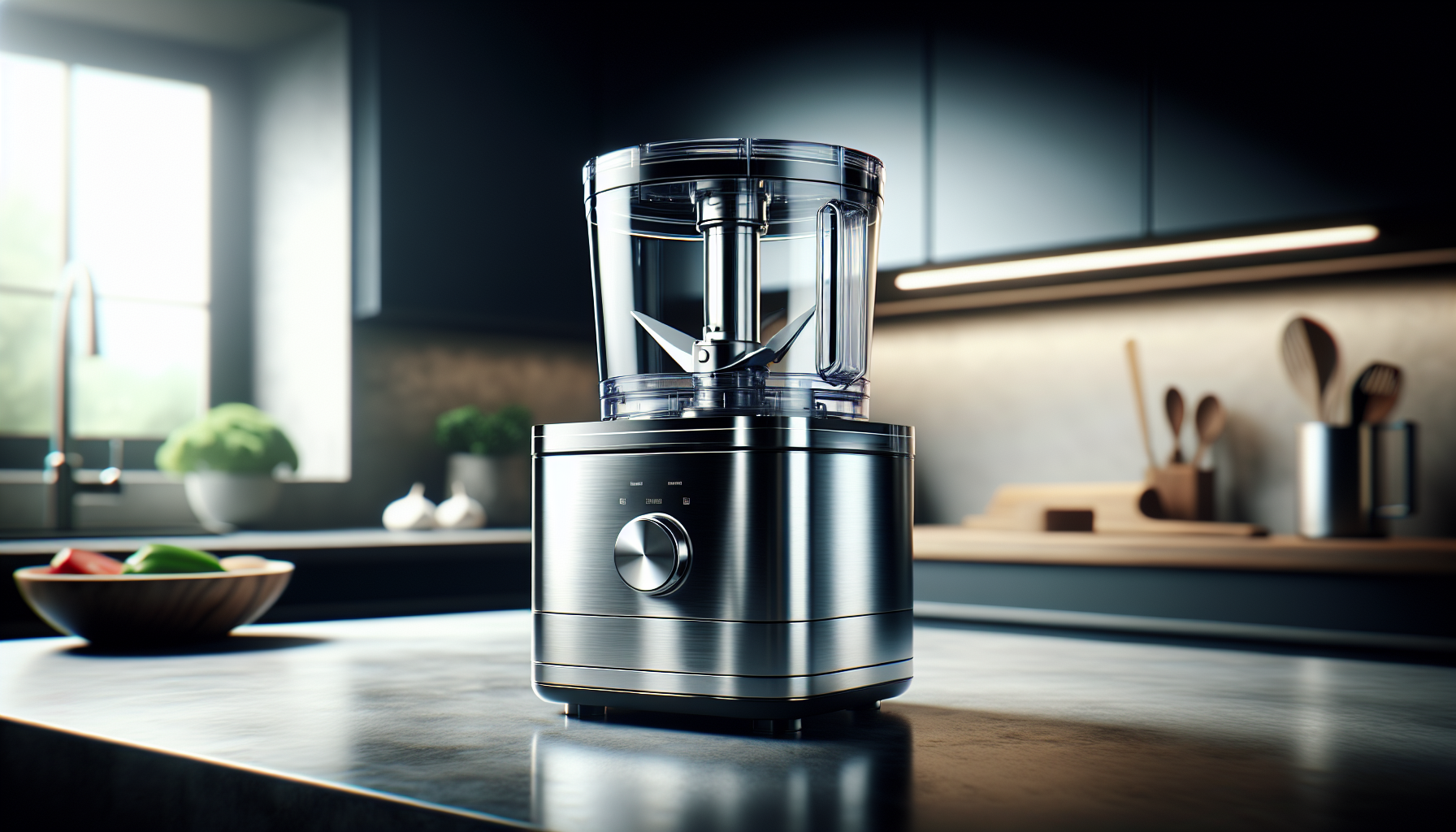Are you tired of spending hours in the kitchen, chopping vegetables and preparing meals? Are you looking for a solution that can make your cooking experience easier and more efficient? Look no further than a food processor. But the question remains, do you really need to invest in an expensive food processor? In this article, we will explore the benefits of owning a food processor and help you determine if splurging on a high-end model is truly necessary.
CHECK OUT FOOD PROCESSORS AND VEGETABLE CHOPPERS ON AMAZON
What is a food processor?
A food processor is a versatile kitchen appliance that helps with various food preparation tasks. It consists of a motorized base with a bowl, a lid, and various attachments or blades. The motor powers the blades, which process, chop, mix, or puree the ingredients in the bowl.
Definition
A food processor is specifically designed to perform tasks like chopping vegetables, grinding nuts, pureeing sauces, mixing dough, and much more. It can save you time and effort in the kitchen by automating repetitive tasks that would otherwise require manual labor.
Functions
The main function of a food processor is to process food quickly and efficiently. It can perform a wide range of tasks, including slicing, shredding, grinding, mixing, and blending. With the right attachments, it can also knead dough, whip cream, and even juice fruits and vegetables.
Common uses
Food processors are commonly used in the kitchen for many purposes. They can be used to prepare ingredients for recipes, such as slicing onions, shredding cheese, or pureeing tomatoes. They can also make homemade sauces and dips, grind coffee beans, and even make baby food. The versatility of a food processor makes it a valuable tool for any home cook.
CHECK OUT FOOD PROCESSORS AND VEGETABLE CHOPPERS ON AMAZON
Types of food processors
There are different types of food processors available in the market, catering to various needs and budgets. Here are three common types:
Entry-level food processors
Entry-level food processors are usually more affordable and have basic functions. They are suitable for occasional use or for those who have simple food processing needs. They may have smaller capacities and less powerful motors compared to higher-end models.
Mid-range food processors
Mid-range food processors offer more features and functionality compared to entry-level models. They have larger capacities, stronger motors, and additional attachments for various tasks. They are ideal for regular use and can handle a wide range of food processing needs without breaking the bank.
High-end food processors
High-end food processors are top-of-the-line models that come with advanced features, powerful motors, and premium build quality. They often have larger capacities, more speed settings, and a variety of specialized attachments for specific tasks. They are suitable for serious home cooks or professional chefs who require maximum performance and versatility.
Factors to consider
When choosing a food processor, there are several factors to consider to ensure you find the right one for your needs.
Budget
Your budget plays a significant role in determining the type and quality of food processor you can afford. Consider how much you are willing to spend and prioritize features based on their importance to you.
Frequency of use
Think about how often you plan to use the food processor. If you only need it for occasional use, an entry-level model may suffice. However, if you cook and process food regularly, investing in a mid-range or high-end food processor may be a better option.
Types of food preparation
Consider the specific tasks and recipes you will be using the food processor for. If you primarily need it for basic tasks like chopping vegetables or making dips, a less powerful model may be suitable. However, if you require more complex functions like dough kneading or nut butter grinding, you will need a more powerful and versatile machine.
Features and accessories
Different food processors offer various features and attachments. Consider which features are important to you, such as multiple speed settings, pulse function, or a wide feed chute. Additionally, think about any specific attachments or accessories you may need, like a dough blade, citrus juicer, or slicing disc.
Advantages of expensive food processors
While expensive food processors may require a larger upfront investment, they come with several advantages that make them worth considering.
Higher quality and durability
High-end food processors are often built with premium materials and superior craftsmanship, resulting in better overall quality and durability. They are designed to withstand heavy use and can last for many years without needing frequent repairs or replacements.
More power and versatility
Expensive food processors typically come with more powerful motors, allowing them to handle tougher ingredients and perform a wider range of tasks effectively. They can effortlessly tackle tasks like kneading dough, grinding meat, or even making nut butter.
Enhanced functionality and control
High-end models usually offer more speed settings and various functions, allowing you to have greater control over the processing consistency and texture of your food. They may also have additional features like a digital timer or touchpad controls for precise and convenient operation.
Greater warranty coverage
Expensive food processors often come with longer warranty periods compared to cheaper models. This is a testament to their superior build quality and gives you peace of mind knowing that you are protected in case of any defects or malfunctions.
Disadvantages of expensive food processors
While expensive food processors offer numerous advantages, there are also a few drawbacks to consider before investing in one.
Higher upfront cost
The biggest disadvantage of expensive food processors is their higher upfront cost. They can be significantly more expensive than entry-level models, requiring a larger initial investment. This can be a deterrent for those on a tight budget or those who do not require the advanced features and capabilities of a high-end machine.
Extra maintenance and care
High-end food processors may require more maintenance and care compared to budget models. They may have more intricate parts, which can be more susceptible to wear and tear over time. Additionally, they may need more time and effort for cleaning, as they often come with more accessories and attachments.
Complexity and learning curve
Expensive food processors often come with advanced features and settings, which may be more complex to understand and operate. There may be a learning curve involved, especially for those who are unfamiliar with using such appliances. This can be overwhelming for some users who prefer a simpler and more straightforward food processor.
Benefits of affordable food processors
Affordable food processors, while lacking some of the advanced features of their expensive counterparts, still offer several benefits that make them a suitable choice for many home cooks.
Cost-effective
Affordable food processors provide a cost-effective solution for those on a budget or those who do not require the extra power and functionality of high-end models. They can still perform basic food processing tasks adequately and serve the needs of casual cooks.
Sufficient for basic tasks
If you primarily need a food processor for everyday tasks like chopping onions, blending soups, or making sauces, an affordable model can fulfill those needs. They may not handle more complex tasks as efficiently, but for basic kitchen prep work, they can still get the job done.
Ease of use
Budget food processors often prioritize simplicity and ease of use. They typically have straightforward controls and fewer settings, making them more user-friendly, especially for beginners or those who prefer a more intuitive operating experience.
Limitations of affordable food processors
While affordable food processors offer their own set of advantages, it is important to be aware of their limitations before making a purchase.
Less power and efficiency
Budget food processors generally have less powerful motors compared to their high-end counterparts. This can result in reduced efficiency and slower processing times, especially when dealing with tougher ingredients or larger quantities.
Limited functionality
Affordable food processors often lack the advanced functionality and specialized attachments found in expensive models. They may not be able to handle complex tasks like dough kneading or meat grinding as effectively, limiting their versatility in the kitchen.
Lower build quality
Cheaper food processors may not have the same level of build quality as their more expensive counterparts. They may be made from cheaper materials and less durable components, potentially leading to a shorter lifespan and the need for more frequent repairs or replacements.
Shorter warranty period
Affordable food processors typically come with shorter warranty periods compared to high-end models. This can be a concern if you want the assurance of long-term coverage and protection against any potential defects or malfunctions.
Determining your needs
Before selecting a food processor, it is crucial to evaluate your specific needs and requirements in the kitchen.
Assessing your cooking habits
Consider how frequently you cook and the types of recipes you regularly prepare. If you cook from scratch often and enjoy experimenting with various ingredients and techniques, a more powerful and versatile food processor may be necessary. If you only cook occasionally or stick to simpler recipes, a more basic model may suffice.
Considering your recipes and techniques
Think about the specific tasks you will be using the food processor for. If you frequently make homemade bread or pastry dough, a food processor with a dough blade or a specifically designed dough function would be beneficial. If you often prepare large quantities of food, look for a model with a larger capacity bowl to accommodate your needs.
Identifying desired features
Make a list of the features and functions you consider essential for your food processor. This can include things like multiple speed settings, pulse function, various attachments, or a large feed chute. Having a clear understanding of your desired features will help you narrow down your options and choose the most suitable model.
Establishing a budget
Determine how much you are willing to spend on a food processor and set a budget accordingly. Consider the long-term value of the appliance and weigh it against your available funds. Remember that investing in a more expensive model can potentially save you money in the long run, as it may last longer and offer more functionality compared to a cheaper model.
Choosing the right food processor
Once you have assessed your needs and established a budget, it’s time to choose the right food processor for you. Here are some steps to help you with the decision-making process.
Evaluate your needs and priorities
Review your cooking habits, recipe requirements, desired features, and budget to determine your top priorities in a food processor. This will help you narrow down your options and focus on models that meet your specific needs.
Research and compare options
Conduct thorough research on different food processor models, comparing their features, specifications, and customer reviews. Look for reputable brands known for their quality and reliability. Pay attention to any feedback regarding performance, durability, and customer satisfaction.
Read customer reviews
Reading customer reviews can provide valuable insights into the pros and cons of a particular food processor model. Pay attention to reviews from customers who have similar needs and requirements as you. Look for patterns or recurring themes in the feedback to get a more accurate understanding of the product’s strengths and weaknesses.
Consider long-term value
When making your decision, think beyond the initial purchase price and consider the long-term value of the food processor. Take into account factors like quality, durability, warranty coverage, and the overall performance of the appliance. This will help you choose a food processor that will serve you well for many years to come.
Conclusion
Whether you opt for an expensive high-end model or a more affordable entry-level food processor, choosing the right one depends on your specific needs and priorities. Consider factors such as your budget, frequency of use, desired features, and the types of food preparation you will be undertaking. By assessing your needs and conducting thorough research, you can find a food processor that perfectly suits your culinary requirements and enhances your cooking experience. Happy food processing!

